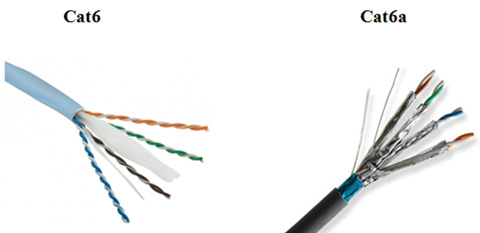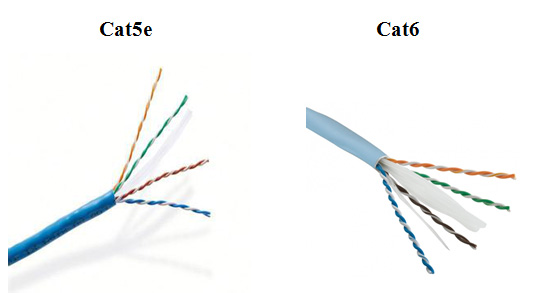What is CAT 6 network cable and how is it different from the CAT 5e network cable?
CAT 6 is the sixth generation twisted-pair network cable used in home and business networks, determined by the cable industry standards of the Electronics and Telecommunications Industry Association (Electronic Industries Association and Telecommunications Industry Association). - EIA / TIA). It is compatible with previous CAT 5 and CAT 5e standards.
- How to press the network cable
How does the CAT 6 network cable work ?
CAT 6 network cable supports standard data transfer rate Gigabit Ethernet, 1 gigabit / second. It uses a 10 Gigabit Ethernet connection with a limited distance, 164 feet for a single cable. CAT 6 network cable has 4 pairs of copper wires and takes advantage of all pairs for signal transfer to achieve high performance.

Some information about CAT 6 network cable:
- The CAT 6 network cable head uses the same RJ-45 standard connector as the previous generation of network cables.
- An upgraded version of CAT 6 called CAT 6a supports speeds up to 10 Gbps.
Compare CAT 6 network cable with CAT 6A network cable

CAT 6A network cabling standards have been created to improve the performance of CAT 6. CAT 6A network cabling to allow data transfer of 10 Gigabit Ethernet network speeds on a single cable of up to 328 feet, double CAT 6, and public support. Ethernet 10 Gigabit Ethernet technology but only up to 164 feet away. In return for higher performance, CAT 6A cables are more expensive than CAT 6 network cables and they are slightly thicker but still use standard RJ-45 connectors.
Compare CAT 6 network cable with CAT 5e network cable

Cable designs for Ethernet networks aim to improve the standard of 5-generation CAT network cabling, creating two types of network cables: CAT 6 and CAT 5e. CAT 5e network cables lack some technical improvements that have been included in CAT 6 network cables, but it supports Gigabit Ethernet installation at a lower cost.
Like CAT 6, CAT 5e uses signaling diagrams according to 4 pairs of wires to achieve the necessary data rate. In contrast, CAT 5 cables also contain 4 pairs of wires but two pairs do not work.
Because it soon became available in the market and provided "good enough" performance for Gigabit Ethernet for a more reasonable price, CAT 5e has become a popular choice for wired network installation. This plus the industry's relatively slow transition 10 Gigabit Ethernet slows down the process of receiving CAT 6 network cables.
Limitations of CAT 6 network cable
As with all other EIA / TIA twisted-pair cables, CAT 6 network cables are limited to a maximum recommended size of 328 feet for nominal connection speeds. As mentioned earlier, CAT 6 network cable supports 10 Gigabit Ethernet connection but not with this distance.
CAT 6 network cables cost more than CAT 5e so many buyers choose CAT 5e network cables and they will probably need to upgrade cables in the future to support 10 Gigabit better.
You should read it
- Ethernet cable and how it works
- How to create a Gigabit Ethernet cable with simple tools
- Distinguish common network cables
- How to create an Ethernet crossover cable
- Power over Ethernet cable
- Press cross cable for 1 Gigabit network card - EASY or DIFFICULT?
- How to Convert Ethernet Connection to WiFi
- 8 best optical cable modems and cables 2018
- Top 10 best network cable testers
- Build a network crossover cable
- How to Connect Two Computers Together Using a Network Cable
- How to Set Up a Wired Network (Ethernet)






 Ethernet cable and how it works
Ethernet cable and how it works Distinguish common network cables
Distinguish common network cables 8 best optical cable modems and cables 2018
8 best optical cable modems and cables 2018 Top 10 best network cable testers
Top 10 best network cable testers Build a network crossover cable
Build a network crossover cable Troubleshooting Guide A network cable is unplugged in Windows
Troubleshooting Guide A network cable is unplugged in Windows